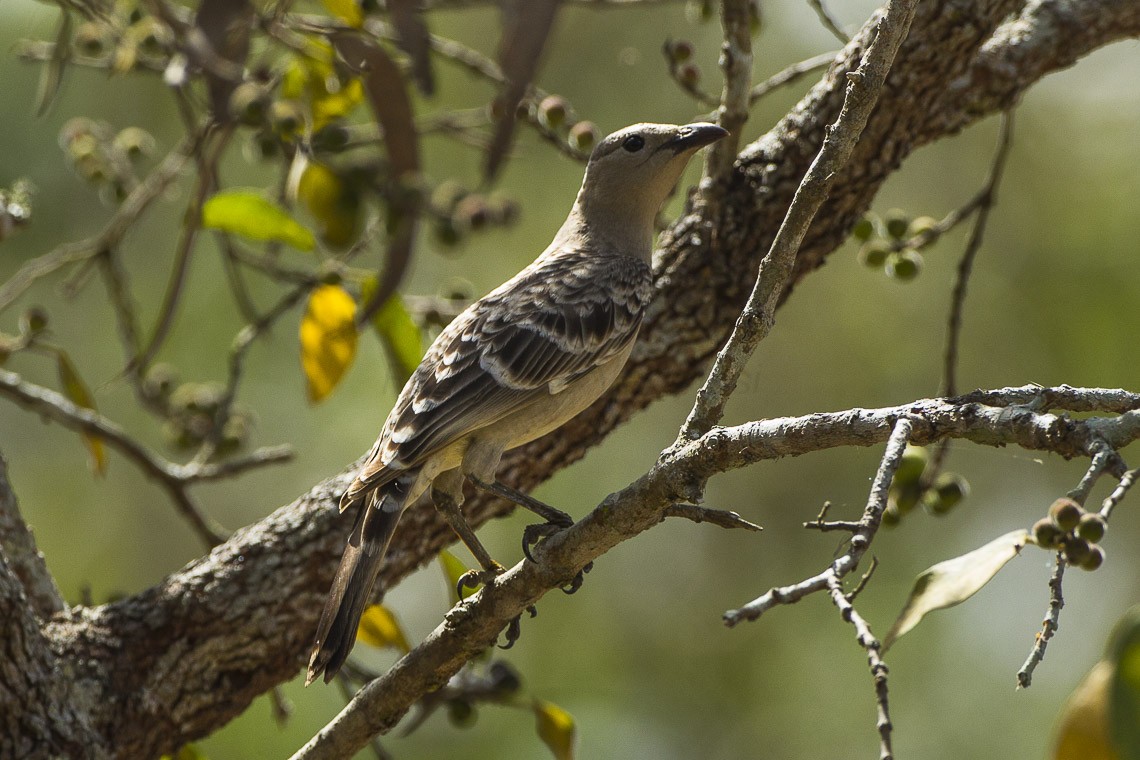Great Bowerbird
A species of Spotted Bowerbirds and Allies Scientific name : Chlamydera nuchalis Genus : Spotted Bowerbirds and Allies
Great Bowerbird, A species of Spotted Bowerbirds and Allies
Botanical name: Chlamydera nuchalis
Genus: Spotted Bowerbirds and Allies
Content
Description People often ask General Info
 Photo By Francesco Veronesi , used under CC-BY-SA-2.0 /Cropped and compressed from original
Photo By Francesco Veronesi , used under CC-BY-SA-2.0 /Cropped and compressed from original Description
The great bowerbird (Chlamydera nuchalis) is a common and conspicuous resident of northern Australia, from the area around Broome across the Top End to Cape York Peninsula and as far south as Mount Isa. Favoured habitat is a broad range of forest and woodland, and the margins of vine forests, monsoon forest, and mangrove swamps. As with most members of the bowerbird family, breeding considerations dominate the lifecycle: females nest inconspicuously and raise their young alone, while the males spend most of the year building, maintaining, improving, defending, and above all displaying from their bowers. Only a male with a successful bower can attract mates. The great bowerbird is the largest of the bowerbird family and is 33 to 38 cm long and fawny grey in colour. Males have a small but conspicuous pink crest on the nape of the neck. 
Size
35 cm
Colors
Brown
Black
Gray
Nest Placement
Ground
Feeding Habits
Great Bowerbird primarily feasts on a variety of fruits, nectar, and seeds, supplementing its diet with flowers, green vegetables, and insects. It exhibits opportunistic feeding by scavenging food scraps. Its feeding behaviors include foraging on the ground and in foliage.
Habitat
Great Bowerbird predominantly resides in forest and woodland environments, including the edges of rainforests and monsoon forests, as well as mangrove swamps. They are also comfortable in eucalypt (Eucalyptus) forests, particularly along rivers and in thickets, and commonly found near water sources up to roughly 600 meters above sea level. Additionally, great Bowerbird adapts well to suburban areas and gardens, sometimes even creating bowers in parks, on footpaths, or within buildings if these locations provide a canopy of foliage for shade.
Dite type
Omnivorous
People often ask
General Info
Feeding Habits
Bird food type
Species Status
Not globally threatened.